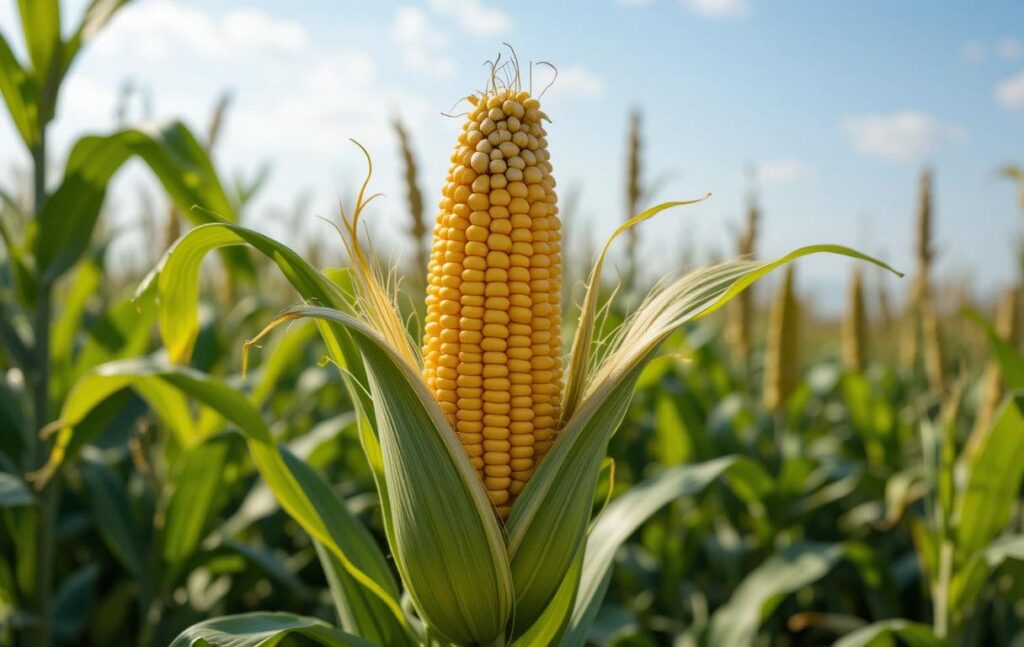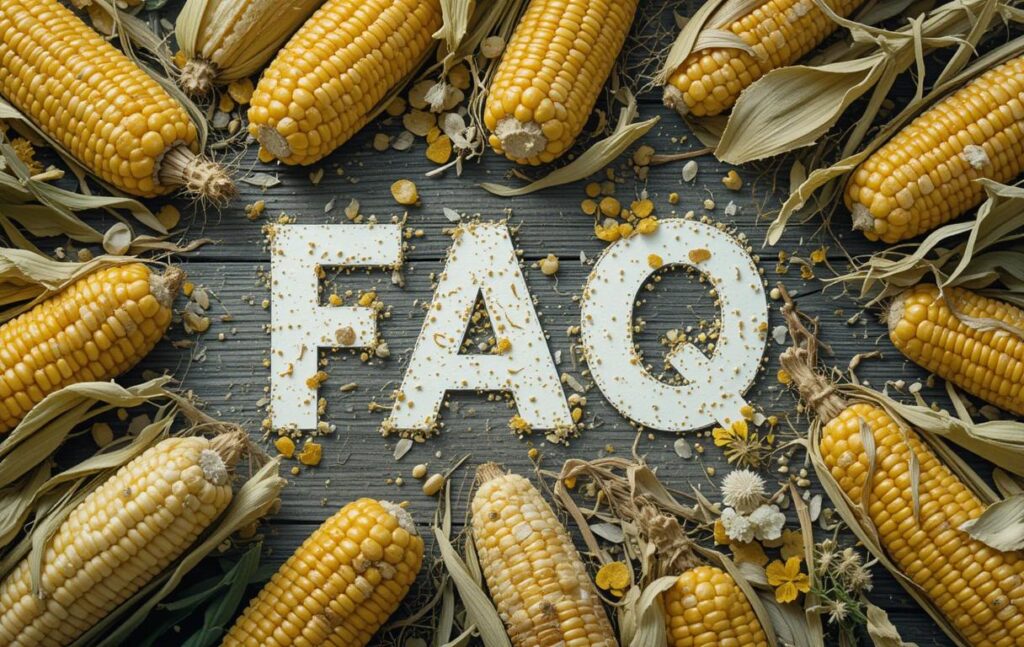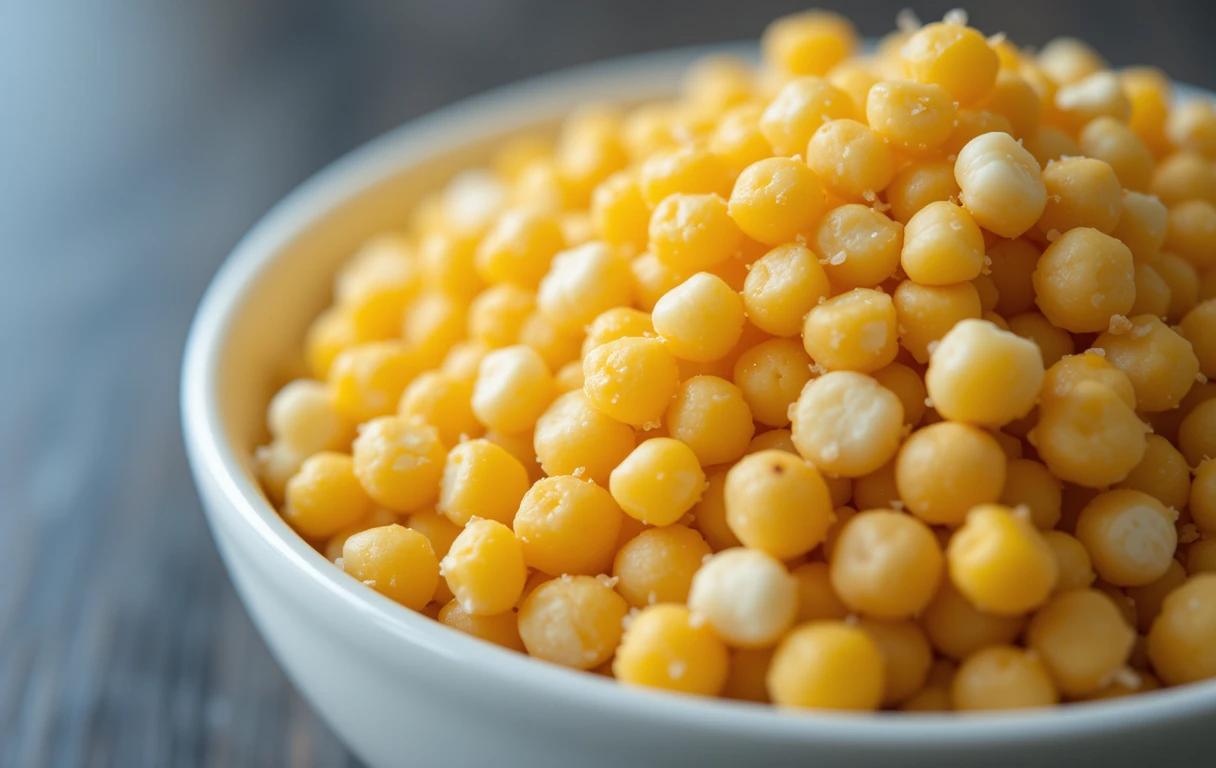Crispy corns have become a popular snack, loved for their crunchy texture and flavorful seasoning. But are crispy corns healthy? This is a common question among health-conscious snackers. While corn itself is nutrient-dense and full of health benefits, the process of making crispy corns—usually involving frying and seasoning—can raise concerns about their nutritional value.
In this article, we’ll explore the nutritional facts, health benefits, and potential risks of crispy corns. We’ll also share tips to enjoy this crunchy snack in a healthier way, so you can make an informed decision about including them in your diet.
What Are Crispy Corns?
Crispy corns are a popular snack made from whole corn kernels that are either fried or baked until they reach a crunchy texture. These bite-sized treats are often seasoned with salt, spices, or other flavorings, making them highly palatable. They are frequently enjoyed as an alternative to potato chips or other savory snacks.
The appeal of crispy corns lies in their satisfying crunch and versatility in flavor. Whether it’s chili-lime, cheese, or classic salted, there’s a version for every palate. Despite their delicious taste, it’s important to understand what goes into making crispy corns and how their preparation can impact their healthiness.
a) How Are Crispy Corns Made?
The process of making crispy corns involves several steps:
- Soaking and Drying: Corn kernels are soaked in water to soften them slightly. This helps achieve an even texture after cooking. Once soaked, the kernels are dried to remove excess moisture.
- Cooking: The kernels are either deep-fried in oil or roasted/baked to achieve their crunchy texture. The frying method is more common commercially, as it results in a more consistent crunch. However, it significantly increases the calorie and fat content of the snack.
- Seasoning: After cooking, crispy corns are tossed in seasoning blends. These can include salt, chili powder, garlic powder, cheese flavors, or even sweet coatings like caramel. Some commercial brands may also use artificial flavorings and preservatives to extend shelf life.
- Packaging: Finally, crispy corns are packaged in air-tight containers to maintain freshness and crunch.
For those who prefer healthier options, crispy corns can also be made at home by baking or air-frying instead of deep-frying.
b) Ingredients Typically Found in Crispy Corns
The ingredients in crispy corns can vary depending on the brand and method of preparation. Here’s a breakdown of what you’re likely to find:
- Corn Kernels: The primary ingredient, corn is naturally rich in fiber, vitamins, and minerals.
- Oil: Common oils include vegetable oil, sunflower oil, or palm oil. Deep frying increases the fat content significantly.
- Salt: Salt is used for flavor but can contribute to high sodium intake if consumed in large amounts.
- Spices and Seasonings: Chili powder, garlic powder, cumin, and cheese flavors are commonly used to enhance taste.
- Preservatives: Artificial preservatives may be added to extend the shelf life of packaged crispy corns.
- Flavor Enhancers: Some brands use additives like MSG (monosodium glutamate) to boost the flavor profile.
While these ingredients can make crispy corns delicious, they also come with health considerations, especially when it comes to added oils, sodium, and artificial preservatives.
Nutritional Value of Crispy Corns
To evaluate if crispy corns are healthy, it’s essential to examine their nutritional profile. While corn itself is a nutritious whole food, the frying and seasoning process can alter its health benefits.
The nutritional content of crispy corns varies depending on how they are prepared. Below is an approximate breakdown per 30-gram serving (about one small handful):
| Nutrient | Amount | % Daily Value (approx.) |
|---|---|---|
| Calories | 140-180 kcal | 7-9% |
| Total Fat | 8-12 grams | 12-18% |
| Saturated Fat | 1-2 grams | 5-10% |
| Sodium | 150-300 mg | 6-12% |
| Carbohydrates | 15-20 grams | 5-7% |
| Dietary Fiber | 2-3 grams | 8-12% |
| Protein | 2-3 grams | 4-6% |
a) Caloric Content
One of the main concerns with crispy corns is their calorie density. A small 30-gram serving can contain up to 180 calories, depending on the preparation method. Deep-fried versions have a higher calorie count due to added oils. For individuals trying to lose weight or maintain a calorie deficit, eating crispy corns in large amounts can quickly add up.
Tip: Opt for baked or air-fried crispy corns as they contain fewer calories compared to deep-fried versions.
b) Fats and Oils Used in Preparation
The type of oil used to prepare crispy corns significantly impacts their nutritional value.
- Deep Frying: When corn kernels are deep-fried, they absorb a substantial amount of oil, increasing the overall fat content. Regular consumption of foods high in unhealthy fats can lead to weight gain, heart disease, and other health issues.
- Healthier Alternatives: Using oils rich in unsaturated fats, such as olive oil or sunflower oil, can make crispy corns a slightly healthier option. Additionally, air-frying or baking eliminates the need for excessive oil.
Key Insight: Always check the packaging label for details on the type of oil used, and opt for brands that use healthier oils or minimal added fat.
Health Benefits of Corn

Before diving into the potential risks of crispy corns, it’s important to highlight the health benefits of corn itself. Corn is a whole grain packed with essential nutrients that can contribute to overall well-being. When consumed in moderation and prepared healthily, corn provides several advantages.
a) Rich in Fiber for Digestive Health
Corn is an excellent source of dietary fiber, which plays a vital role in promoting healthy digestion. A single serving of crispy corns can provide 2-3 grams of fiber, depending on how they are processed.
Benefits of Fiber:
- Helps regulate bowel movements and prevent constipation.
- Supports gut health by promoting the growth of beneficial bacteria.
- Keeps you feeling full for longer, aiding in weight management.
Fiber is particularly beneficial for individuals who need to improve their daily fiber intake. However, the fiber content in crispy corns is often reduced if they are excessively processed or fried.
b) Provides Essential Vitamins and Minerals
Corn is naturally rich in several vitamins and minerals that are essential for maintaining good health. These nutrients remain present to some extent in crispy corns, depending on the preparation method:
- Vitamin B Complex: Corn contains B vitamins like niacin, thiamine, and folate, which are crucial for energy production and brain function.
- Magnesium: Magnesium supports muscle function, heart health, and energy metabolism.
- Phosphorus: This mineral is vital for healthy bones and teeth.
- Antioxidants: Corn contains antioxidants like lutein and zeaxanthin, which help protect the eyes from oxidative stress and age-related damage.
By including crispy corns in your diet occasionally, you can still benefit from these essential nutrients. However, processing and frying can diminish the vitamin content.
c) Gluten-Free Snack Option
Corn is naturally gluten-free, making crispy corns an excellent snack choice for individuals with celiac disease or gluten intolerance. Unlike wheat-based snacks, crispy corns provide a safe and satisfying alternative for those following a gluten-free diet.
Health Risks of Crispy Corns
While corn itself is nutritious, the way crispy corns are prepared can introduce several health risks. It’s essential to consume them mindfully to avoid these potential downsides.
a) High in Calories and Fat
Crispy corns, especially deep-fried varieties, are calorie-dense and high in fat. A small serving (30 grams) can contain up to 180 calories and 12 grams of fat.
Why This Matters:
- Regular consumption of high-calorie snacks can lead to weight gain over time.
- Excessive fat intake, particularly unhealthy saturated fats, can increase the risk of heart disease.
Tip: Opt for baked or air-fried crispy corns to reduce the calorie and fat content. Homemade versions are also a healthier option as they allow you to control the amount of oil used.
b) Sodium Content and Its Impact
One of the major concerns with crispy corns is their high sodium content. A single serving can contain anywhere from 150 to 300 milligrams of sodium, depending on the seasoning.
Health Risks of Excessive Sodium:
- Raises blood pressure, increasing the risk of hypertension and heart disease.
- Causes water retention, leading to bloating and discomfort.
- Puts stress on the kidneys, especially for individuals with kidney-related issues.
For those on a low-sodium diet, it’s essential to consume crispy corns in moderation or choose unsalted varieties.
c) Potential Additives and Preservatives
Many commercial brands of crispy corns use artificial additives and preservatives to enhance flavor and prolong shelf life. These include:
- Monosodium Glutamate (MSG): Used as a flavor enhancer but can cause adverse reactions in sensitive individuals, such as headaches or nausea.
- Artificial Flavorings: May contain chemicals that are not beneficial for health.
- Preservatives: Certain preservatives can lead to long-term health concerns if consumed in excess.
Solution: Always check the ingredients list on packaged crispy corns. Look for brands that use natural seasonings and minimal additives. Alternatively, prepare crispy corns at home to ensure they are free of unnecessary chemicals.
d) Impact of Over-Processing
While corn is a healthy whole grain, turning it into crispy corns through deep frying and excessive seasoning can strip away its natural nutrients. The over-processing reduces the levels of vitamins, minerals, and fiber, leaving behind mostly empty calories.
Example: A serving of plain boiled corn provides far more nutrients and fiber than its fried, seasoned counterpart.
Are Crispy Corns Healthy in Moderation?

The question of whether crispy corns are healthy ultimately depends on how they are prepared and consumed. While deep-fried, heavily salted versions can be unhealthy when eaten frequently, enjoying crispy corns in moderation as part of a balanced diet can still be acceptable.
What Does Moderation Mean?
Moderation means consuming crispy corns in controlled portions—ideally 30 grams (1 small handful)—and pairing them with other healthy foods to balance their nutritional impact. It also involves limiting the frequency of consumption to avoid excessive calories, fat, and sodium.
a) A Comparison with Healthier Snacks
To understand the healthiness of crispy corns, let’s compare them to other popular snacks based on their calories, fat content, and nutritional value:
| Snack | Calories (30g) | Fat | Fiber | Nutritional Notes |
|---|---|---|---|---|
| Crispy Corns (Fried) | 140-180 kcal | 8-12g | 2-3g | High in fat and calories; moderate fiber content. |
| Air-Popped Popcorn | 100 kcal | 1g | 4g | Low-fat, high-fiber, and minimally processed. |
| Baked Chips | 120-150 kcal | 4-6g | 1-2g | Lower fat than fried chips but less fiber. |
| Roasted Chickpeas | 130 kcal | 3g | 5g | High in fiber and protein, making them nutritious. |
Key Takeaway
- Compared to air-popped popcorn or roasted chickpeas, crispy corns are higher in fat and calories, especially when deep-fried.
- Opting for baked or air-fried crispy corns makes them a better alternative to fried snacks like potato chips.
b) Tips to Make Crispy Corns Healthier
If you’re a fan of crispy corns but want to enjoy them without compromising your health, consider the following tips to make them a healthier snack:
- Bake or Air-Fry Instead of Deep-Frying
- Use an air fryer or bake the corn kernels in an oven to achieve the desired crunch with minimal oil. This reduces the calorie and fat content significantly.
- Lightly spray the kernels with olive oil or a healthier oil alternative before baking.
- Control the Salt and Seasonings
- Limit the use of salt to reduce sodium content. Opt for natural seasonings like garlic powder, chili powder, or turmeric for added flavor without the health risks.
- Avoid artificial flavorings or MSG.
- Use Healthier Oils
- Choose oils rich in unsaturated fats, such as olive oil, avocado oil, or sunflower oil, instead of refined vegetable oils.
- Portion Control
- Measure out 30-gram servings and avoid mindless snacking straight from the package. Pre-portioning helps manage calorie intake.
- Add Nutritional Value
- Pair crispy corns with other healthy snacks, such as fresh vegetables, nuts, or fruits, to balance out their nutrient profile.
- Sprinkle a small amount of flaxseed or chia seeds for an added boost of omega-3 fatty acids and fiber.
- Make Them at Home
- Homemade crispy corns allow you to control the ingredients and cooking method. By baking instead of frying, you can enjoy a guilt-free version of this crunchy treat.
Who Should Avoid Crispy Corns?
While crispy corns can be enjoyed in moderation, certain individuals should exercise caution or avoid them altogether due to their nutritional profile.
a) People on Low-Sodium Diets
Crispy corns often contain high levels of sodium, which can be harmful to individuals managing:
- Hypertension (high blood pressure)
- Kidney diseases
- Heart conditions
Tip: Opt for unsalted crispy corns or prepare them at home with minimal sodium to suit dietary restrictions.
b) Those Watching Their Caloric Intake
If you are trying to lose weight or maintain a calorie-controlled diet, fried crispy corns might not be the best snack choice. Their high calorie and fat content can quickly lead to weight gain when consumed in large portions.
Healthy Alternative: Choose baked or air-fried crispy corns to reduce calorie intake while still enjoying the crunch.
c) Individuals with Sensitive Stomachs
Some individuals may experience digestive discomfort after consuming crispy corns, especially if they are heavily seasoned or fried. Excessive fat, spices, or additives can lead to:
- Bloating
- Acid reflux
- Indigestion
For people with sensitive stomachs, it’s best to consume plain or lightly seasoned crispy corns in small amounts.
How to Enjoy Crispy Corns Healthily
Crispy corns can be a satisfying snack when enjoyed responsibly. By making a few mindful choices, you can balance their crunchy goodness with better nutrition. Here are some practical ways to enjoy crispy corns while maintaining a healthy diet:
a) Pair Crispy Corns with Nutritious Sides
One effective way to balance the snack is to combine crispy corns with other healthier foods. For example:
- Fresh Vegetables: Enjoy crispy corns with sliced cucumbers, cherry tomatoes, or carrot sticks for added fiber and vitamins.
- Protein-Rich Snacks: Pair crispy corns with a handful of roasted chickpeas, almonds, or boiled eggs to boost satiety and balance the macronutrients.
- Fruits: Combine crispy corns with fresh fruit like apple slices or grapes for a mix of sweet and savory flavors.
Pairing crispy corns with nutrient-dense foods helps reduce overeating while creating a more balanced snack.
b) Use Portion Control
Portion control is key when it comes to crispy corns. A single serving size is typically 30 grams, which is about one small handful. Eating straight from the bag can lead to mindless snacking, so try pre-portioning your crispy corns into smaller containers or bowls.
Pro Tip: If you’re watching your calories, enjoy crispy corns as part of a meal rather than as a standalone snack. For example, sprinkle them over a salad for an added crunch.
c) Opt for Healthier Preparation Methods
Fried crispy corns are more calorie-dense due to the added oil, but you can enjoy healthier versions by trying these alternatives:
- Baking: Bake corn kernels in the oven at a low temperature until they become crunchy. Use a light spray of olive oil for flavor.
- Air-Frying: Air-frying requires very little oil and can replicate the crunch of deep-fried crispy corns without the added fat.
- Roasting: Dry roast the kernels in a pan with minimal oil and seasoning for a lighter version.
These methods help preserve the natural nutrients of corn while reducing unnecessary calories and unhealthy fats.
d) Choose Low-Sodium and Additive-Free Options
Many commercial brands of crispy corns use excessive salt and artificial flavorings, which can negatively impact health. Here’s how to make smarter choices:
- Look for low-sodium or unsalted versions of crispy corns.
- Check ingredient labels and avoid products with artificial preservatives or flavor enhancers like MSG.
- Choose brands that use healthier oils, such as olive or sunflower oil, instead of refined vegetable oils.
Alternatively, making crispy corns at home gives you complete control over the ingredients, allowing you to use natural seasonings like garlic powder, paprika, or turmeric.
Frequently Asked Questions (FAQs)

Here are answers to some of the most commonly asked questions about crispy corns:
a) Are crispy corns good for weight loss?
Crispy corns can be included in a weight-loss diet, but only in moderation. Since they are high in calories and fat (especially when fried), it’s important to stick to small portions and opt for healthier cooking methods like baking or air-frying. Pair them with protein or fiber-rich foods to make them more filling.
Tip: Monitor your calorie intake and avoid overeating crispy corns to stay on track with weight-loss goals.
b) Are crispy corns suitable for diabetics?
Crispy corns have a moderate glycemic index (GI), which means they can cause a spike in blood sugar levels, especially if they are deep-fried or heavily seasoned. Diabetics should consume crispy corns in small portions and pair them with high-protein foods like nuts to slow down the absorption of sugar.
Recommendation: Opt for baked or air-fried crispy corns with minimal salt and seasoning.
c) Can crispy corns be a healthy snack?
Yes, crispy corns can be a healthy snack when:
- They are prepared using healthier methods like baking or air-frying.
- They are consumed in controlled portions.
- They are free from excessive salt, unhealthy oils, and artificial additives.
For the healthiest option, prepare crispy corns at home using natural ingredients.
d) Are homemade crispy corns healthier?
Homemade crispy corns are generally healthier because you can control the ingredients and cooking method. By baking or air-frying the kernels and using minimal oil and natural seasonings, you can create a nutritious snack without the drawbacks of commercial versions.
e) How often can I eat crispy corns?
Crispy corns should be enjoyed occasionally, rather than as a daily snack. Eating them 1-2 times a week in small portions is a reasonable frequency that allows you to enjoy the snack without overconsumption of calories, fat, or sodium.
f) Can children eat crispy corns regularly?
While crispy corns can be a fun snack for children, they should not be eaten regularly due to their high fat, sodium, and calorie content. Instead, offer healthier alternatives like plain corn on the cob, roasted chickpeas, or air-popped popcorn.
For children, always ensure crispy corns are prepared with minimal salt and oil.
Conclusion
Crispy corns are a tasty and satisfying snack that has gained popularity for their crunch and flavor. However, the question “Are crispy corns healthy?” depends on how they are prepared, the portion size, and how often they are consumed.
While corn itself is packed with fiber, vitamins, and essential minerals, turning it into crispy corns—especially through deep-frying and heavy seasoning—can diminish its nutritional benefits. High fat, calorie, and sodium content can make commercial crispy corns an unhealthy choice if consumed in excess.
That said, crispy corns can be enjoyed as part of a balanced diet when consumed in moderation and prepared healthily. Baking or air-frying the kernels instead of deep-frying significantly reduces their calorie and fat content. Pairing crispy corns with nutrient-dense foods like vegetables or nuts can further enhance their nutritional value.
Key Takeaways:
- Choose healthier cooking methods like baking or air-frying.
- Practice portion control and stick to a single serving size of 30 grams.
- Opt for low-sodium, additive-free varieties or make crispy corns at home.
- Balance crispy corns with other healthy snacks to ensure better nutrition.
By following these tips, you can enjoy crispy corns guilt-free while maintaining a healthy lifestyle. Whether you’re looking for a gluten-free snack or a fun, crunchy treat, crispy corns can be a great option—just remember that moderation is key!
Recipe: Crispy Corn
Related Recipes
- “Tuna Tomato Sauce Pasta Recipe“: A tomato-based recipe showcasing another way to use tomatoes.
- “Baked Chicken Fettuccine Alfredo with Broccoli“: Another comforting dish that can be complemented with tomato-based sauces.
Ingredient-Focused Content
- “Lions Mane Mushroom Recipe“: Suggest using a tomato gravy as a flavorful addition for plant-based dishes.
Cooking Techniques and Enhancements
- “Mango Habanero Salsa“: Explore complementary uses of sauces and gravies for flavor diversity.
Storage and Reuse Tips
- “Sous Vide Recipes“: Recommend tomato gravy as a sauce for sous vide-cooked meats or vegetables.
- “Ocean Spray Cranberry Sauce Recipe“: Guide readers on making and storing sauces, including tomato gravy.

